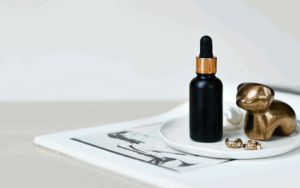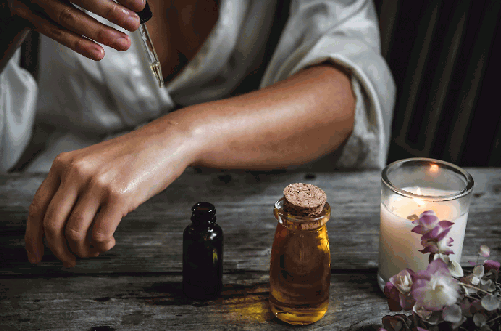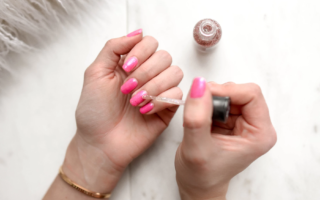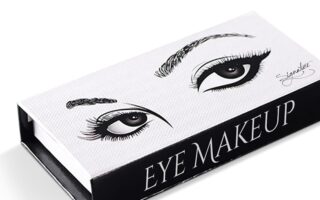Sometimes, even the most popular or most expensive brands in the market will be ineffective if they contain ingredients that are not suited to your skin type. You simply can’t rely on trendy packaging and winning marketing when shopping for skincare products. Checking the Popular Skincare Ingredients should be among your top considerations when choosing products to address your skin concerns.
Taking the time to do a bit of research will help you find the right combination of ingredients so you can target specific skin concerns you may have like oily skin, acne, dullness, dark spots, aging, soothing, and more.
With the recent skincare boom, various brands have been advertising many ingredients that claim to work wonders. If you’re a consumer who has zero or little knowledge about skincare, it can truly be confusing to muddle through the sea of terms and complex-sounding words on ingredient labels.
We’re here to help you sort out which ones are actually worth the hype and how they can align with your skincare goals.
7 popular skincare ingredients that target specific skin issues

Photo from Content Pixie on Unsplash
Check out this list of tried and tested popular skincare ingredients that might be worth adding to your skincare routine!
1. Niacinamide
Niacinamide is a water-soluble type of Vitamin B3 that works for all skin types. It is a vital nutrient not produced by the human body and helps keep a host of skin disorders like acne and eczema at bay. Sometimes listed as “nicotinamide” or “niacin” on ingredients lists, it curbs skin irritation and helps improve a host of other inflammatory skin issues.
Niacinamide is one of the most hardworking, multitasking ingredients in the list that can benefit the skin in many ways:
- It helps build essential proteins like keratin that keep the skin supple and healthy.
- Fights sun damage by building healthy skin cells and providing protection from UV rays.
- It helps build the skin’s lipid barrier. Niacinamide’s moisture-locking abilities make it suitable for dry skin and help shield it from environmental damage that can cause fine lines and wrinkles.
- Niacinamide reduces sebum production, which makes it ideal for oily skin.
- It promotes ceramide production to improve rosacea.
Niacinamide is included in many topical leave-on skincare products like creams and serums that are usually applied twice a day. Some cleansers also have niacinamide. Its concentration varies depending on the product type, but typical formulations do not go higher than 5%.
Research shows marked skin improvements from niacinamide use in as little as four to eight weeks, making it appear more toned, smooth, and supple.
2. Vitamin C
Vitamin C is an antioxidant best known for its skin brightening and anti-aging effects. Deemed generally safe for most skin types, it curbs pigment formation, protects from harmful free radicals, and increases collagen in the skin.
Here’s how introducing Vitamin C to your routine can impact your skin:
- Evens skin tone and brightens a dull complexion. It fades hyperpigmentation caused by sun damage or age spots by impeding melanin production
- Lowers transepidermal water loss, making your skin lock in moisture to increase hydration.
- Boosted collagen helps prevent signs of aging like sagging, wrinkles, and fine lines.
- Promotes skin healing from wounds or issues like sunburn, reducing the risks of irritation and scarring.
There are many products containing Vitamin C, including cleansers, toners, exfoliators, moisturizers, and serums. Serums will have higher concentrations, between 10 to 20%, to maximize their positive effects on the skin.
Serums should be used on completely clean skin to maximize its absorption, either every morning or every other morning. Take caution when combining Vitamin C with other acidic ingredients like retinol since it can irritate the skin.
3. Retinol
Retinol is a fat-soluble antioxidant that is typically used for anti-aging and acne treatments. This derivative of Vitamin A revs up collagen production and stimulates cell turnover.
- Its tiny molecules penetrate the dermis and help subdue free radicals to increase collagen and elastin, plumping up the skin to minimize pores, wrinkles, and fine lines.
- Retinol is used in severe acne treatment to prevent clogged pores and blemishes.
- This antioxidant helps treat hyperpigmentation and correct dark spots.
- Retinol’s exfoliant properties help even out skin texture.
Usually found in creams and serums, it is best to exercise caution when combining retinol with other exfoliants or skincare products containing acids. It is a very potent ingredient that can cause irritation in the form of dryness, peeling, and sun sensitivity upon initial use. There is a high risk for sunburn when using retinol, so it is best applied at nighttime or used in combination with sunscreen.
4. Alpha Hydroxy Acid (AHA)
Usually plant-derived, AHA is best suited for people with dry, aging skin. These water-soluble acids are known to improve skin texture by exfoliating dead skin cells, prevent recurring acne by unclogging pores, and fight signs of aging by stimulating collagen production.
AHAs like glycolic, lactic, citric, and malic acids have anti-inflammatory properties that promote healthy blood flow, which can help improve dull skin. AHAs are also great for treating pigmentations, fading scars, and making your favored skin care products work better by removing layers of dead skin cells that will otherwise impede absorption.
AHA is widely used in many skincare commodities like serums, toners, anti-aging products, creams, gels, and various skin treatments. Those that are used daily, like toners or moisturizers, have low concentrations of up to 5%. Higher concentrations of up to 15% increase its exfoliating effects.
5. Beta Hydroxy Acid (BHA)
BHAs are gentle, oil-soluble carboxylic acids that can deeply penetrate pores to help get rid of excess oil, acne, and blemishes. It helps slough off dead skin to prevent unsightly pimples. Salicylic acid is the most widely used BHA found in many types of skincare products.
It is known as an exfoliant that is structurally identical with AHAs, but it works differently. AHA is a more aggressive exfoliant that is better suited for repairing skin pigmentations and improving aging skin.
Aside from being a gentler acid than AHA, BHA’s additional antibacterial properties make them a good addition to acne treatment products. Recommended use for beginners is twice a week at low concentrations since it can cause dryness and flaking. The frequency of use and level of BHA potency may be increased once the skin has tolerated it or as recommended by a dermatologist.
6. Salicylic Acid
A kind of BHA known for its acne-fighting power, salicylic acid exfoliates the skin, eliminates bacteria, and helps clear the pores of blackheads and whiteheads. This is recommended for those with oily or acne-prone skin.
Commonly applied as a spot treatment for acne, over-the-counter and prescription-strength formulas use this powerhouse ingredient. It can be found in various topical products like gels (0.5–5%), lotions (1–2%), ointments (3–6%), pads (0.5–5%), soap (0.5–5%), and solutions (0.5–2%).
7. Azelaic Acid
An often overlooked ingredient, azelaic acid is a gentle, anti-inflammatory exfoliant that provides many benefits for sensitive skin. This naturally occurring dicarboxylic acid is synthesized by yeast that lives on human skin. As a lab-engineered ingredient for skincare products, azelaic acid is derived from grains like wheat.
Suited for all skin types, azelaic is a comedolytic with antioxidant and antibacterial properties that helps treat acne-prone skin and rosacea. Azelaic acid can address hyperpigmentation thanks to its ability to inhibit the enzyme tyrosinase. Generally safe for use for all skin types, it can be used twice daily or once every other day if you have extra sensitive skin.
This gluten-free acid is a primary ingredient in topical gels, creams, or foam formulations. Prescription formulations of azelaic acid go up to 15–20%, and its OTC versions offer lower concentrations of 10% or below.
Affected areas where azelaic acid is applied can peel and cause dryness. That’s why even if it is one of the gentlest acids, users must still slowly start when introducing this product to their routine.
Target skin issues with the right combination of ingredients
The road to great skin lies in building a routine that addresses your specific concerns. Not every facial wash, cream, gel, ointment, toner, or serum will work as advertised because skincare differs from individual to individual.
Make sure that you do due diligence and pay close attention to Popular Skincare Ingredients lists on product labels so that you can understand how they may work for your skin. Choosing the correct concentrations and formulations is also essential, so take heed of these details to ensure that you can reap the full benefits of your chosen product.
You should also consult a doctor before shopping for products that contain these ingredients and incorporating them into your skincare routine, especially if you have pre-existing medical conditions. Doing patch tests to avoid allergic reactions is recommended, as some of these Popular Skincare Ingredients can be harsh on sensitive skin.




